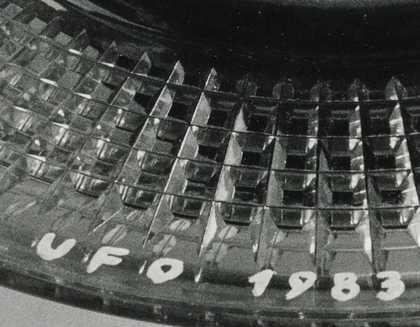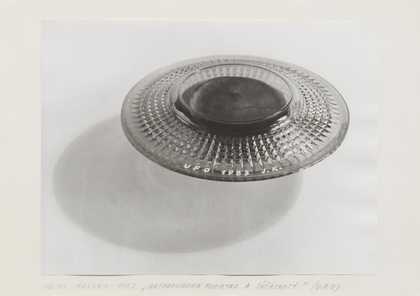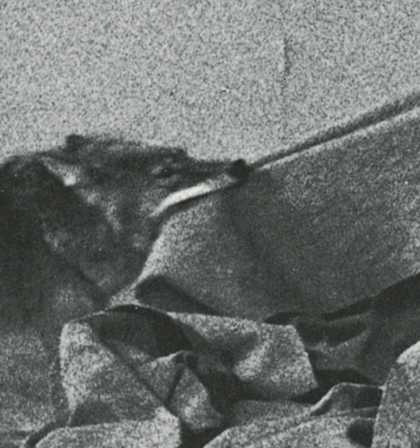
Július Koller, Archaeological Monument-Presence (U.F.O.) 1983, gelatin silver print on paper mounted onto paper and graphite on paper, 17.8 x 23.6 cm (detail)
© The estate of Július Koller, photo courtesy Tate Photography
We don’t ornament our technology anymore. There was a time, centuries ago, when everything from weapons to scientific instruments had their share of filigree and symbolism. Now, in this age of ‘high-tech’, function dominates form and it’s the needs of the machine that dictate the intelligence we invest in details of design.
But what if we are not the only kind of technological intelligence the universe has spawned? As an astrophysicist who considers the possibilities of life elsewhere in the cosmos, I was drawn to the hatchwork of raised edges surrounding Koller’s saucer-shaped Archaeological Monument. It’s worth noting that the UFO is made of glass. Fashioning glass objects by raising sand to a high temperature was one of humanity’s early technological achievements, and it is this material that gives the hatchwork its capacity to rework the light that falls upon it. Stretching from the saucer’s hollowed out inner circumference to the smoothed circle of its outer lip, the depressions between the hatchwork’s ordered lines catch light, then shadow and then light again.
The object and its ornamentation might just as easily be a candy dish on some grandmother’s table as the product of an advanced, star-crossing intelligence. If we embrace Koller’s provocative title, however, what then are we to make of this hatchwork? Is it nothing more than the machine logic of an alien craft’s design, a means of venting waste heat from the beating heart of its unimaginable engines? Or might its symmetry and elegance belie something universal in the way any intelligence born on any world would respond to the world’s aesthetics? And that is, perhaps, the real question this detail raises. Intelligence must always emerge from the cosmos through the subtle pathways of evolution. We humans, and anyone else out there, are born of nature. But when evolution gives a species the capacity to build technologies of power, control or even daily need, will the inner response to nature’s own power remain? Will the need to create beauty persist?
Archaeological Monument-Presence (U.F.O.) was purchased by Tate in 2007 and is on display at Tate Modern.
Adam Frank is Professor of Astrophysics at the University of Rochester. His book Light of the Stars – Alien Worlds and the Fate of the Earth is published by WW Norton & Co.


